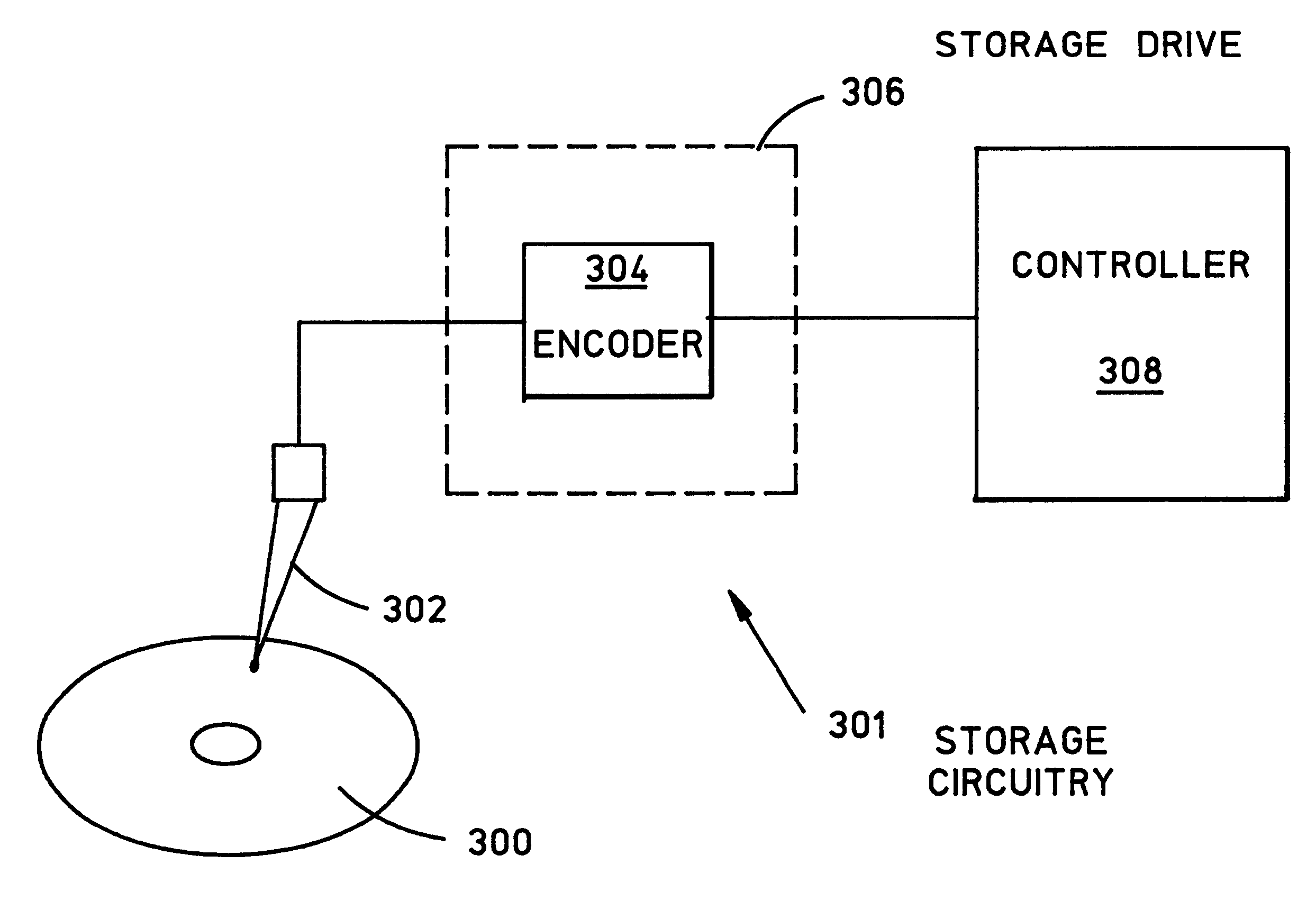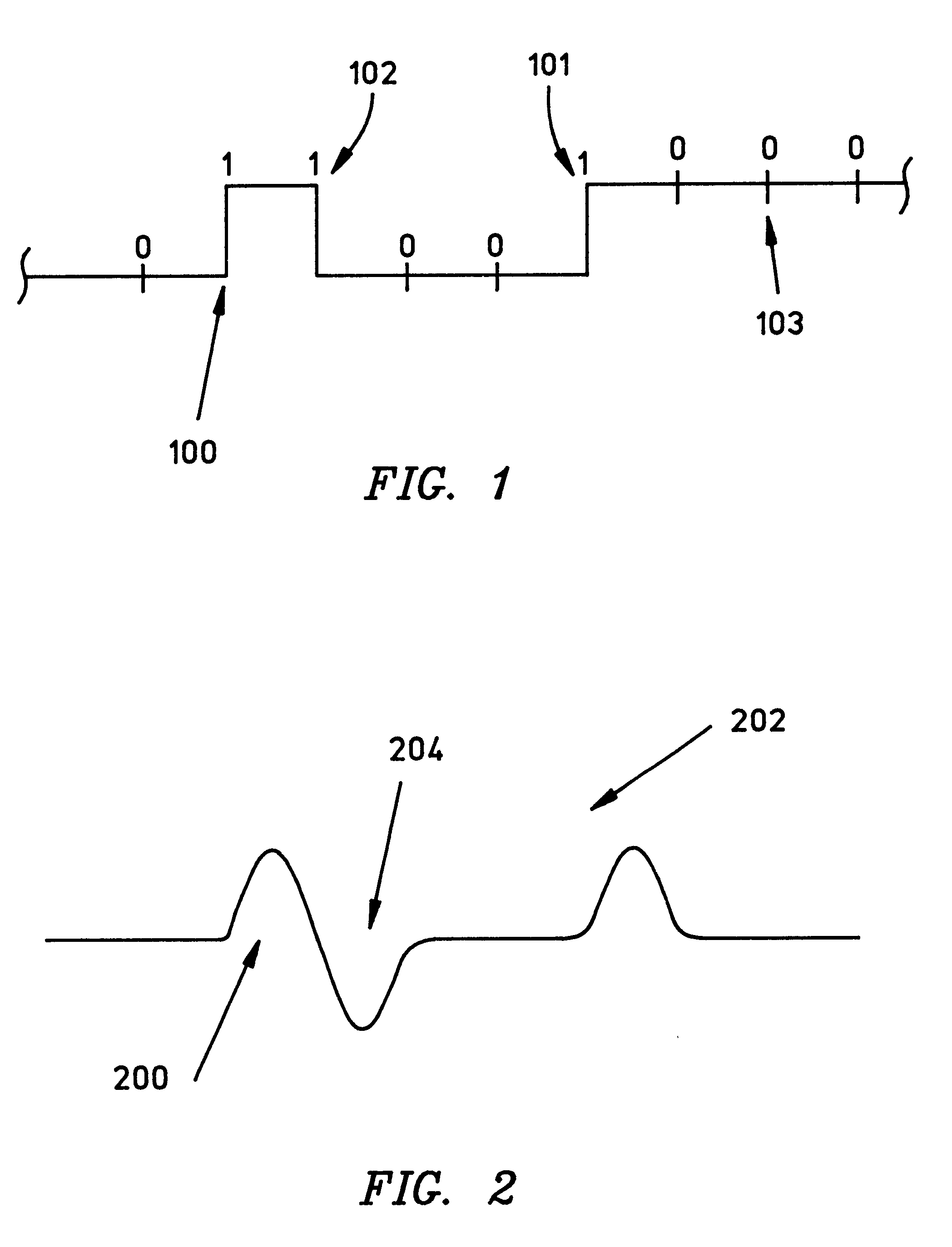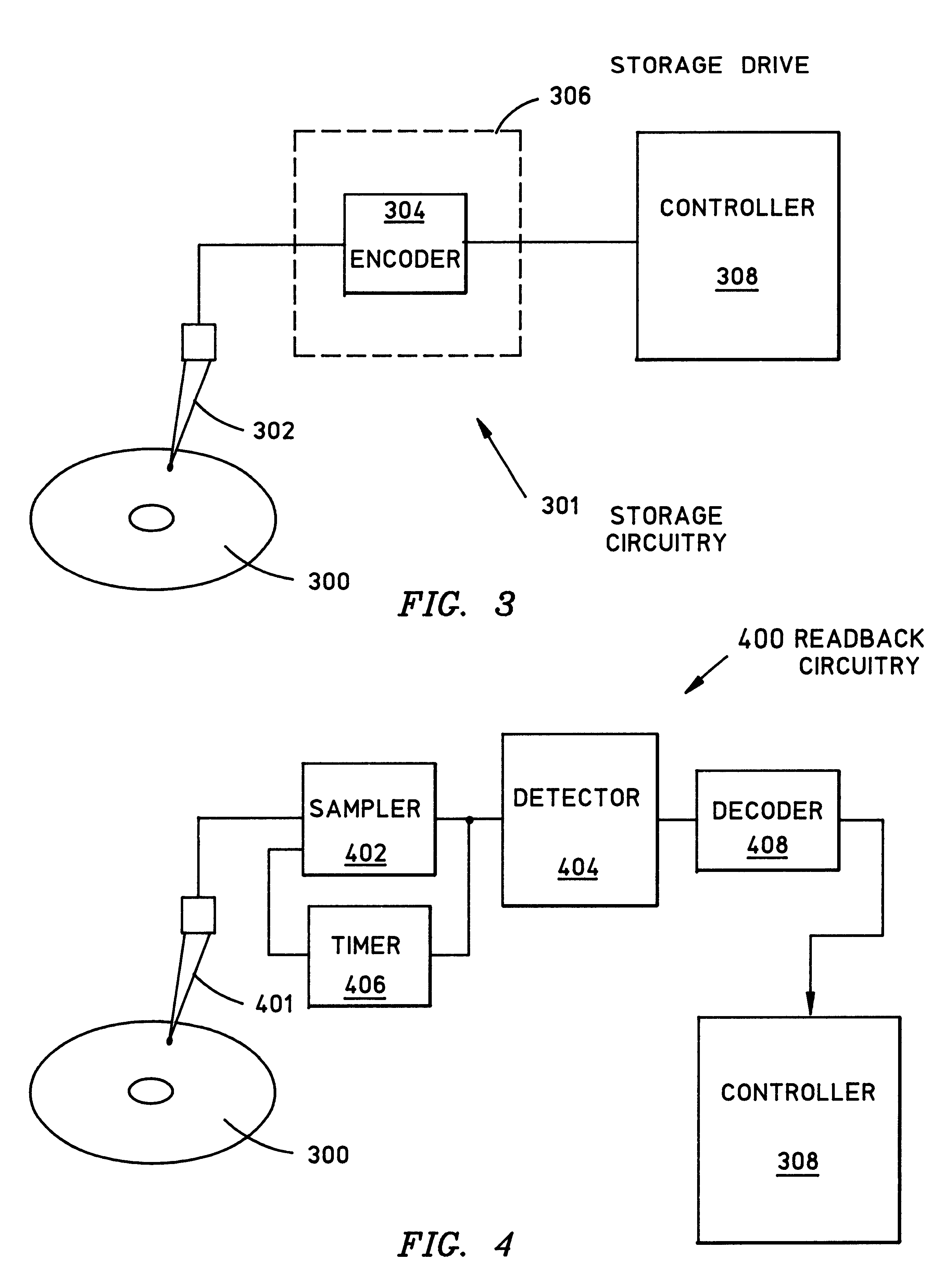Data storage to enhance timing recovery in high density magnetic recording
a high density magnetic and data storage technology, applied in the field of timing, can solve the problems of reducing the efficiency of data storage, affecting the timing recovery of high density magnetic recordings, and unable to meet the requirements of the application,
- Summary
- Abstract
- Description
- Claims
- Application Information
AI Technical Summary
Benefits of technology
Problems solved by technology
Method used
Image
Examples
Embodiment Construction
While there have been shown what are presently considered to be preferred embodiments of the invention, it will be apparent to those skilled in the art that various changes and modifications can be made herein without departing from the scope of the invention as defined by the appended claims.
For example, the threshold may be changes to obtain a greater or lesser timing adjustment sensitivity.
Additionally, instead of basing timing adjustments upon "peaks" (as shown above), timing adjustment may be performed using zero-crossings. As mentioned above, zero-crossings are features in the analog readback waveform produced in response to binary bit patterns such as "101". When zero-crossings are used instead of peaks, the operation of tasks 1200 of FIG. 12 differ from that described above in a number of respects. First, query 1206 only concludes that timing adjustment is possible if the two consecutive samples have opposite signs. Another difference occurs in the operation of queries 1210 ...
PUM
| Property | Measurement | Unit |
|---|---|---|
| magnetic flux transitions | aaaaa | aaaaa |
| frequency | aaaaa | aaaaa |
| degree of frequency | aaaaa | aaaaa |
Abstract
Description
Claims
Application Information
 Login to View More
Login to View More - R&D
- Intellectual Property
- Life Sciences
- Materials
- Tech Scout
- Unparalleled Data Quality
- Higher Quality Content
- 60% Fewer Hallucinations
Browse by: Latest US Patents, China's latest patents, Technical Efficacy Thesaurus, Application Domain, Technology Topic, Popular Technical Reports.
© 2025 PatSnap. All rights reserved.Legal|Privacy policy|Modern Slavery Act Transparency Statement|Sitemap|About US| Contact US: help@patsnap.com



